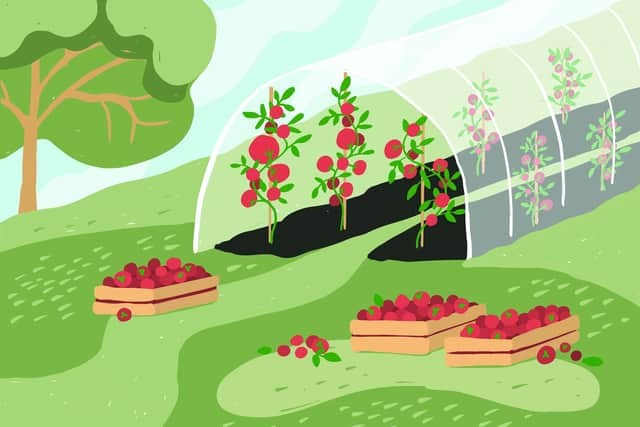Kirsty McLuckie on cultivating comestibles
A study recently found that 26.7 million Britons grew some kind of comestible in the last year –presumably including both the impressive folk who are completely self-sufficient for all their greens, as well as those who just about manage to keep a pot of supermarket basil alive on a windowsill.
Apparently, 7.4 million of us attempted horticulture at home for the first time during the pandemic period, and now – perhaps as a result of the cost of living crisis – people are turning to cheaper ways to feed their families.
Advertisement
Hide AdAdvertisement
Hide AdConnecting with nature in this way also has a positive impact on mood, which is why having access to a garden or communal green areas has become such a priority.


Having space in your garden to grow fruit and veg, or even installing a polytunnel or greenhouse, immediately makes a property more desirable to buyers seeking the kind of country lifestyle so many of us crave.
This month is the time when we reap the benefits of our toil, and the green-fingered among us find themselves with gluts of tomatoes, courgettes and apples.
Five years ago, I joined a local growing group and with funds from a local trust we managed to put up a large polytunnel in our village.
With 16 individual raised beds inside, we formed a little community with some experts on hand to give advice, but the rest of us without a clue how to go about producing anything worth eating.
And it has been a definite steep learning curve with many disasters. A peach tree planted in a communal bed produced nothing but shade – and the odd wizened fruit – until we bit the bullet and moved it outside, where it seems a little happier.
My father sprinkled a packet of turnip seeds over his bed and was rewarded with a bumper crop. But after weeks of boiling, mashing and even a disastrous attempt at pickling the blighters, we ended up donating the majority to a farmer for animal feed – as none of us are neep fans.
We learned not to plant mint, horseradish or poppies, which all spread like wildfire left unchecked.
Advertisement
Hide AdAdvertisement
Hide AdLast year, I thought it would be fun to grow a pumpkin for Halloween, only for the monstrous plant to take up my whole growing space. The cost in terms of compost, the yearly rental of the bed, and my time in feeding and watering it, made the resulting single pumpkin probably the most expensive ever grown.
I’ve come to the conclusion that the ease of growing something is indirectly proportionate to how much you want to eat it – take kale, for instance. It is a cinch to grow, but while it is very good for us, it can be an uninspiring ingredient even for adults. Asparagus, on the other hand, takes years to get a decent crop, but is so worth the extra effort.
For novices wanting to try their hand at producing for the table, particularly those with children, I’d advise starting out with strawberries and peas – both of which grow very easily in pots. They have the advantage of cropping early and can sustain you while you are gardening.
However, not many of mine ever make it indoors, as they are best eaten fresh off the plant.
Better than a turnip any day.
- Kirsty McLuckie is property editor at The Scotsman